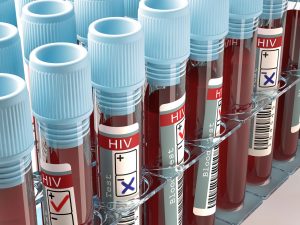Today, 4th February, World Cancer Day is observed to raise awareness of cancer and to encourage the global population to check for potential signs and take preventative measures.
This year marks the beginning of a new three-year campaign titled “I Am and I Will”, which calls for people to make a “personal commitment” to combatting cancer.
What is cancer?
Our bodies are made up of millions of cells. When changes occur in one cell or in a small group of cells, this can lead to the development of cancer, Cancer Research UK outlines.
When changes to the genes occur in the body, this can cause cells to grow and multiply at a rapid rate, causing them to become cancerous.
This can then lead to the growth of a tumour.
When cells become cancerous in one area of the body, they can sometimes spread into other bodily tissues.
There are more than 200 different types of cancer, the most common forms being breast, prostate, lung and bowel cancer.
What is lifetime risk of cancer?
Lifetime risk of cancer is the calculation of whether a person is likely to be diagnosed with cancer at some point during their life.
The estimated lifetime risk of men being diagnosed with cancer is one in two, or 50 per cent, Cancer Research UK states.
The estimated lifetime risk is for women is also one in two, or 45 per cent.
This means that one in two people in the UK have a strong chance of being diagnosed with cancer during their lifetime.
However a large range of genetic and lifestyle factors mean the risk for each person is different.
Why is age a big risk factor?
Cancer can develop at any age. However, the majority of cases – nine out of 10 – occur among people aged 50 or older.
Over time, the cells in our body can become damaged.
This may happen for a number of reasons, such as being exposed to the sun for an excessive amount of time or from being a smoker.
This damage to the cells can build up over the years, causing the cells to grow and multiple at a faster rate than usual and thus increasing likelihood of developing cancer.
Can lifestyle affect risk of developing cancer?
It’s believed that eating certain foods can increase your chances of being diagnosed with cancer later on in life.
The NHS explains that reducing your intake of red meat can in turn reduce your risk of developing bowel cancer.
Obesity has also been linked to increased risk of developing cancer. A recent study found that the number of obesity-linked cancers is rising faster in young adults than individuals aged over 45.
People who use sunbeds or sunbathe irresponsibly could be at risk of developing skin cancer.
According to the NHS, the UV rays emitted by sunbeds can be far stronger than the sun during the hottest part of the day.
What treatments are available for cancer?
Treatments for cancer include surgery, radiotherapy, chemotherapy, hormone therapy, biological therapies, bisphosphonates and bone marrow and stem cell transplants.
What are the signs of cancer for both men and women?
Signs for cancer can include unusual lumps or swelling anywhere on the body, changes in appearance of a mole, ulcers lasting longer than three weeks, a persistent cough or croaky voice lasting longer than three weeks, blood in the urine or faeces, unexplained weight loss or heavy night sweats.
Breast cancer or cervical cancer signs include an unusual breast change, bleeding from the vagina after the menopause or between periods, and persistent bloating.
According to a recent study conducted by Bupa and HCA Healthcare UK, one in four women in the UK don’t check their breasts for signs of breast cancer.
Can cancer be prevented?
Experts estimate that more than four in 10 cancer cases could be prevented by undertaking certain lifestyle changes.
These changes include not smoking, keeping a healthy body weight, cutting back on alcohol, eating a healthy balanced diet, keeping active, avoiding certain infections (like HPV), avoidance of radiation and staying safe in the sun.
Breast cancer could be detected early through self-examination and smear tests can spot abnormal cells that could lead to cervical cancer.






